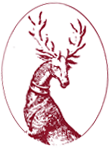“Red deer are more 'authentic' as the native species, but, since the Norman Conquest, fallow have been considered more beautiful-'they love to form great aggregations, and a dense sea of exquisitely spotted deer murmuring and piping quietly amongst themselves can still dazzle us with sheer beauty'. This is an accessible, wideranging and immensely enjoyable history by a deer veterinarian who gained a PhD in the subject at Cambridge and can convincingly quote from Italo Calvino, Gaston Bachelard and William Wordsworth. It is billed and presented as an international history, and there are short chapters on deer parks in China and Mughal India. Its bulk and real value, however, is as a chronicle of the English deer park, with side-roads into Scotland and Continental Europe. Who, for example, knew about the widespread practice from the late 17th century of 'water hunts', when deer would be driven into rivers, lakes and pools so they could be killed by huntsmen in boats? This was often combined with the erection of elaborate mock castle facades or triumphal arches, through the gateways of which the hunted animals were driven into the water for the entertainment of spectators.
The author notes that. In recent years, historians have begun dropping the 'deer' from deer parks, to acknowledge the wide range of other activities that occurred within the pale: grazing of other livestock, timber production, pheasant coverts and so on, as well as less decorative estate industries such as quarrying, smelting, tanning, milling and charcoal burning. But Dr Fletcher makes the point that deer, as status symbols (their main role, he says), were always unquestionably considered the most important asset in any park, and persuasively argues that calling a deer park merely a park isn't good enough. He also reminds us that the straight radial avenues of large formal landscape parks, emanating from a central patte d'oie, or'goose foot', are derived from the need for spectators and participants in deer hunts to be able to view the quarry and the hunting party from one central point, as they crossed the alldes from one parcel of woodland to the next. More controversial is his contention that the ancient wooded landscape of Britain in actuality resembled a kind of savannah, or open wood-pasture, because of the grazing habits of deer and other animals, which result in groves of trees. The New Forest represents the largest single survival of this habitat in Western Europe. It may prove difficult, however, to dislodge the average person's vision of pre-enclosure Britain as a kind of Robin Hood sylvan paradise. Mention must also be made of the author's brand-new theory regarding the derivation of the term ha-ha, a perimeter ditch in an English park. It is usually said to be a phonetic rendering of the A-ha!'exclamation (as in: A-ha! A hidden ditch!'). No, says Dr Fletcher, citing his Dutch colleague Frans Vera, who tells him that the Flemish word for deer park, haga-as echoed in the names of The Hague in the Netherlands, Haga in Sweden and possibly Hagley in this country-is pronounced something like our ha-ha.
Country Life, July 6, 2011”

